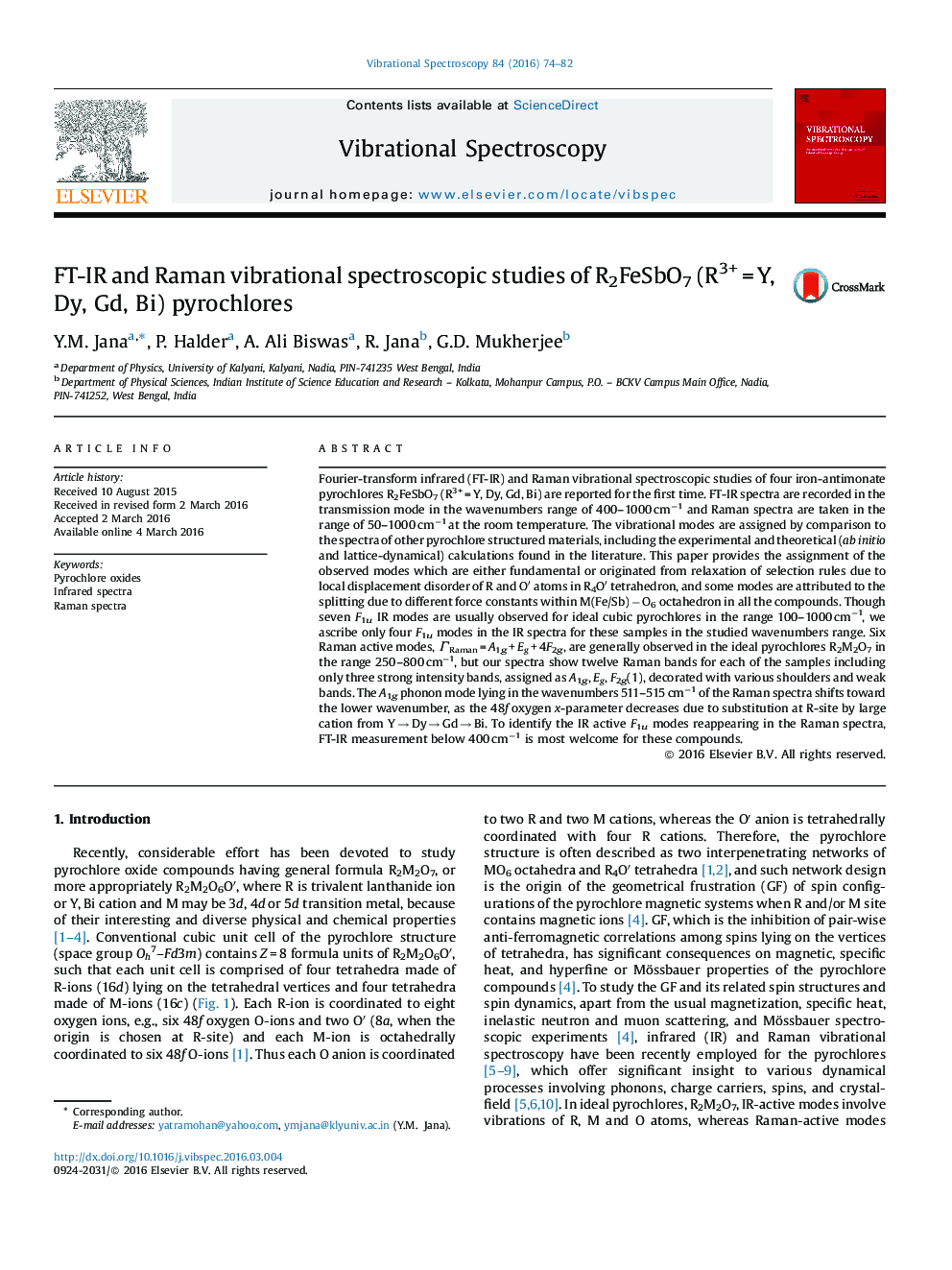| Article ID | Journal | Published Year | Pages | File Type |
|---|---|---|---|---|
| 7691100 | Vibrational Spectroscopy | 2016 | 9 Pages |
Abstract
Fourier-transform infrared (FT-IR) and Raman vibrational spectroscopic studies of four iron-antimonate pyrochlores R2FeSbO7 (R3+ = Y, Dy, Gd, Bi) are reported for the first time. FT-IR spectra are recorded in the transmission mode in the wavenumbers range of 400-1000 cmâ1 and Raman spectra are taken in the range of 50-1000 cmâ1 at the room temperature. The vibrational modes are assigned by comparison to the spectra of other pyrochlore structured materials, including the experimental and theoretical (ab initio and lattice-dynamical) calculations found in the literature. This paper provides the assignment of the observed modes which are either fundamental or originated from relaxation of selection rules due to local displacement disorder of R and Oâ² atoms in R4Oâ² tetrahedron, and some modes are attributed to the splitting due to different force constants within M(Fe/Sb) â O6 octahedron in all the compounds. Though seven F1u IR modes are usually observed for ideal cubic pyrochlores in the range 100-1000 cmâ1, we ascribe only four F1u modes in the IR spectra for these samples in the studied wavenumbers range. Six Raman active modes, ÎRaman = A1g + Eg + 4F2g, are generally observed in the ideal pyrochlores R2M2O7 in the range 250-800 cmâ1, but our spectra show twelve Raman bands for each of the samples including only three strong intensity bands, assigned as A1g, Eg, F2g(1), decorated with various shoulders and weak bands. The A1g phonon mode lying in the wavenumbers 511-515 cmâ1 of the Raman spectra shifts toward the lower wavenumber, as the 48f oxygen x-parameter decreases due to substitution at R-site by large cation from Y â Dy â Gd â Bi. To identify the IR active F1u modes reappearing in the Raman spectra, FT-IR measurement below 400 cmâ1 is most welcome for these compounds.
Related Topics
Physical Sciences and Engineering
Chemistry
Analytical Chemistry
Authors
Y.M. Jana, P. Halder, A. Ali Biswas, R. Jana, G.D. Mukherjee,
